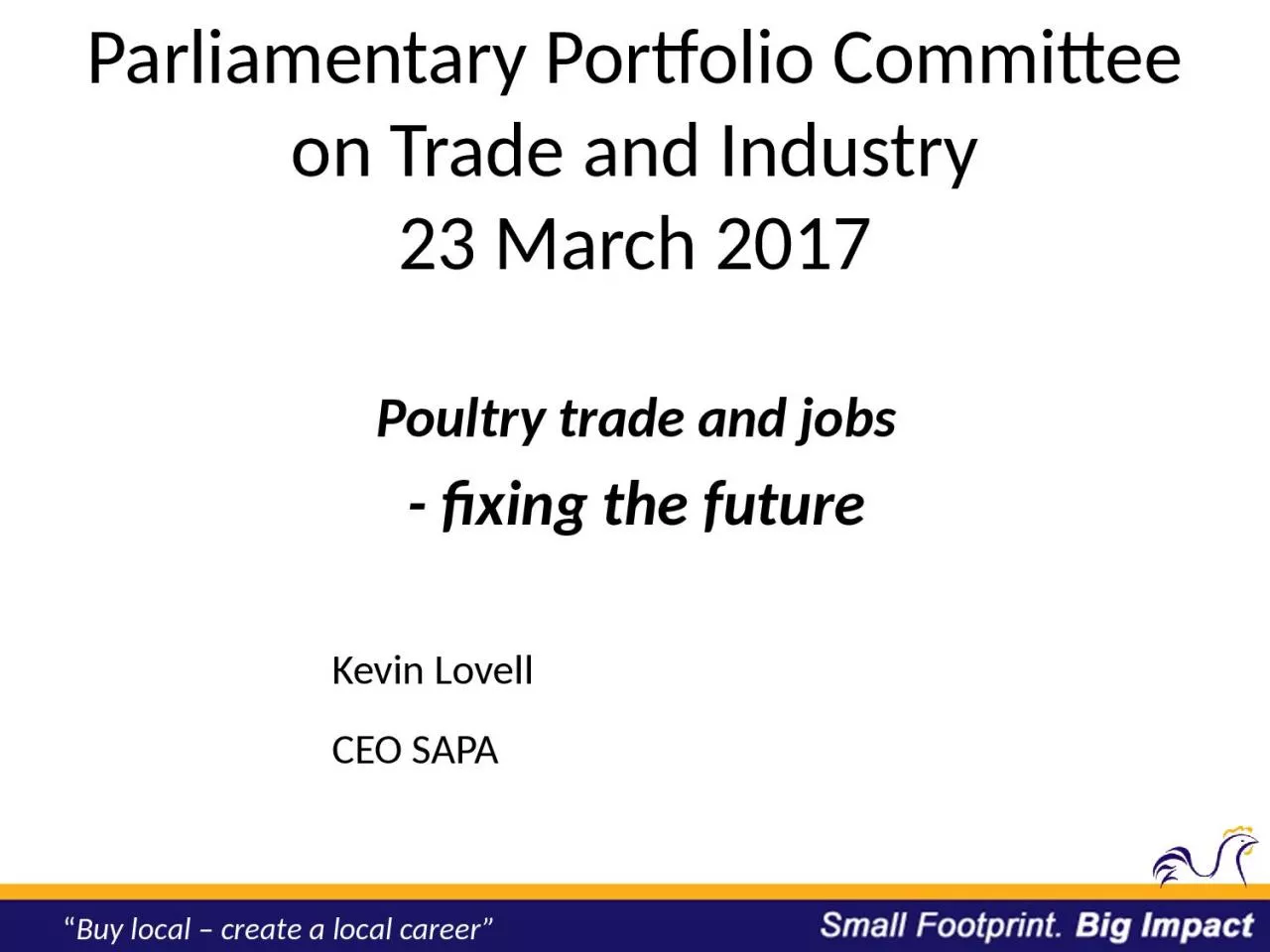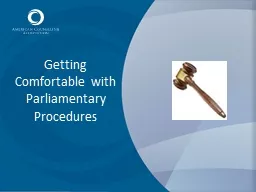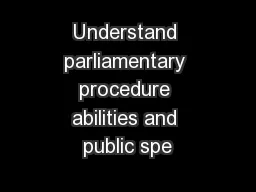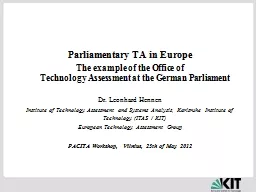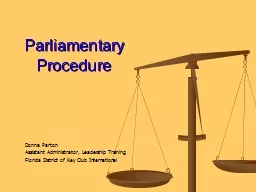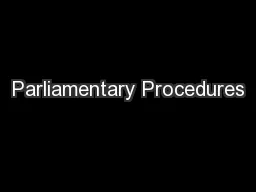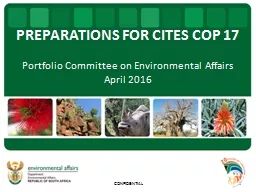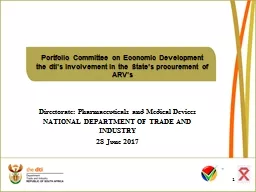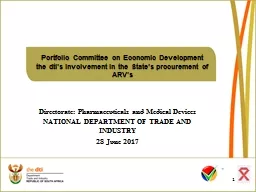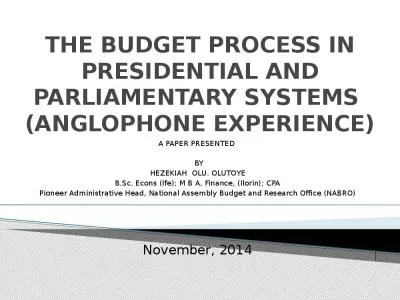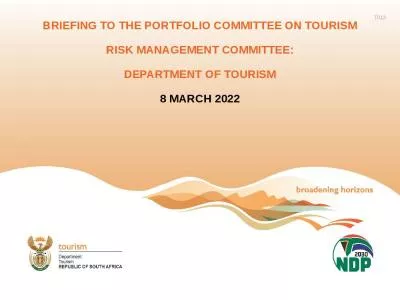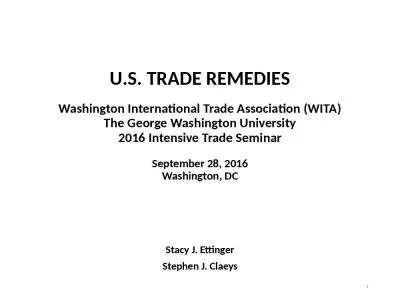PPT-Parliamentary Portfolio Committee on Trade and Industry
Author : daisy | Published Date : 2023-11-08
23 March 2017 Poultry trade and jobs fixing the future Kevin Lovell CEO SAPA Discussion topics Introduction Basics of the poultry industry Poultry trade Competitiveness
Presentation Embed Code
Download Presentation
Download Presentation The PPT/PDF document "Parliamentary Portfolio Committee on Tra..." is the property of its rightful owner. Permission is granted to download and print the materials on this website for personal, non-commercial use only, and to display it on your personal computer provided you do not modify the materials and that you retain all copyright notices contained in the materials. By downloading content from our website, you accept the terms of this agreement.
Parliamentary Portfolio Committee on Trade and Industry: Transcript
Download Rules Of Document
"Parliamentary Portfolio Committee on Trade and Industry"The content belongs to its owner. You may download and print it for personal use, without modification, and keep all copyright notices. By downloading, you agree to these terms.
Related Documents

